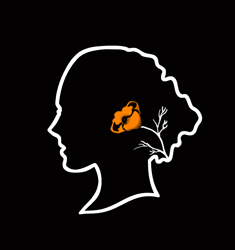Dr. Shuji Nakamura, oil on canvas, 36x36, by Holli Harmon
Artistic Inventors
Grade: 4th
Subjects: Observation, Basic Lightbulb Physics, Identifying with Fictional Characters, Art
Class Sessions: 3
Lesson Summary: Students will apply the ‘See, Think, Wonder’ method by studying the portrait of Dr. Shujii Nakamura ad physicist and inventor as painted by Holli Harmon. The dynamic yet playful portrait will teach students about a real-life, 21st century inventor, shapes, color, line and culture. The elements in the lesson are designed to capitalize on the various application points in the portrait of Dr. Shujii Nakamura. The lesson plan below is only a guideline. Be creative and feel free to adapt the resources below to fit your student’s needs.
Lesson Objective:
Students will learn how to define, identify and differentiate between: Form, Shape, Sphere, Cube
Students will learn the basic physics behind a lightbulb and more specifically a lightbulb that gives off color
Will identify a certain fictional character they admire and incorporate the character into a portrait of themselves
Materials:
- Portrait of Shuji Nakamura by Holli Harmon
An assortment of 4th grade fiction reading material
Supplies for the self-portrait
Examples of spheres e.g. tennis balls, marbles, snow globes
Examples of cubes e.g. dice, boxes, juice boxes
A lamp without a shade (to show the bulb and switch)
http://www.slideshare.net/adaney2009/basic-electricity-4th-grade-level - electricity at a 4th grade level
“What Would You Invent?” Warm Up sheet. Large box over lines where students draw a picture of what they would invent and write 2-4 paragraphs describing it.
Lesson Steps:
Class Session 1: Have paper monitors pass the ‘What Would You Invent” sheet out to all students.
Explain the activity: learning about art and inventors
Have students talk in their table groups about what they wrote/drew.
Acknowledge people who share outloud.
Pull up the portrait of Dr. Shujii Nakamura
See. Think. Wonder
Students can record observations in daily journals or continue to contribute to the discussion.
Teach the difference between shape and form: Shape is 2D, Form is 3D
Class Session Lesson 2:
Pull up Dr. Nakamura’s portrait
Refresh the student’s memory on Form vs. Shape (create a game of sorts for that)
Set shapes on the able groups: cubes and spheres
Observe how the shapes are examples of form.
Talk about how the shapes impact the perspective of Shujii’s portrait.
Transition to the art activity
Have students browse their books or come prepared with a character to draw themselves with
Start portraits with their favorite character and a chose cube or sphere shape in it. E.g. self portrait of Jane with Charlotte the spider and her spider web spherical body.
Class Session Lesson 3: The Lightbulb and Physics
Use Slide share or
Use TED Video how modern light bulbs work: http://ed.ted.com/on/hmfW9mBU
Assessment:
Student’s contribution to the See.Think.Wonder model
The ability to differentiate between shape and form
The warm up activity: draw and write
The portrait of themselves as a whole
The student’s ability to identify a fictional character and integrate into portrait
Standards Addressed
CCSE:
Production and Distribution of Writing
4. Produce clear and coherent writing (including multiple-paragraph texts) in which the development and organization are appropriate to task, purpose, and audience. (Grade-specific expectations for writing types are defined in standards 1–3 above.)
Comprehension and Collaboration
2. Engage effectively in a range of collaborative discussions (one-on-one, in groups, and teacher-led) with diverse partners on grade 4 topics and texts, building on others’ ideas and expressing their own clearly. a. Come to discussions prepared, having read or studied required material; explicitly draw on that preparation and other information known about the topic to explore ideas under discussion. b. Follow agreed-upon rules for discussions and carry out assigned roles. c. Pose and respond to specific questions to clarify or follow up on information, and make comments that contribute to the discussion and link to the remarks of others. d. Review the key ideas expressed and explain their own ideas and understanding in light of the discussion
Presentation of Knowledge and Ideas
6. Add audio recordings and visual displays to presentations when appropriate to enhance the development of main ideas or themes.
Created by Katherine Kwong Intern Fall 2016

